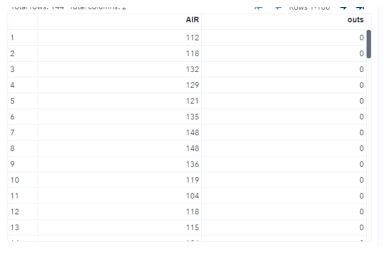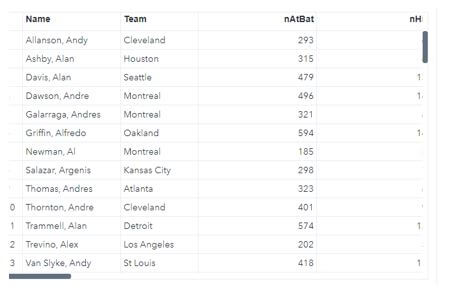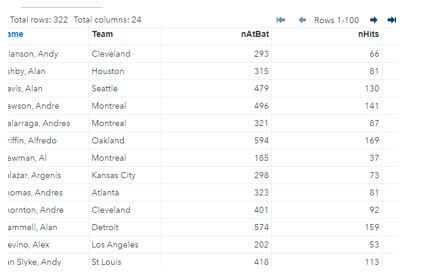Updated March 16, 2023
Introduction to SAS Index
The SAS index is one of the functions used to help the character expression in the string characters and will also return the first position of the string characters, which occurs at the first character of the string. It is mainly assigned at the I18N with Level 0 status designed for the SBCS data to use the function process and supports the varchar type.
Overview of SAS Index
The SAS index will store the values in the sorting order, like ascending order values for the specific set of variables, including the data information. If the location of the variable function on the location of those values within the data observations in the data file, it helps to enable the index to monitor the data observed by the value. Without the data index for the SAS accesses followed sequentially in the order which observed datas looking for SSN numbers until it observed the new data index for reading the model. For Example, SSN like 123-45-6789, the data SSN for accessing the SAS datas directly satisfies the data conditions for using the index. Observing the value to read it on the index helps create a data file.
Using SAS Index
The SAS index is mainly used to store the values in ascending order for a specific set of variables, which helps retrieve the information. New data set information is held on an index set of values which set the option in DATA statement with a broad set of formats like DATA data-set-name(INDEX= variable list which is declared by the user end and divided by the UNIQUE set of exceptional values while passing the parameters or arguments in the integer format. In the form, which is on the data set name to include the new set of SAS data creation, many SAS programmers will never use them with a simple and composite set of SAS indexes to determine the unknown variables. Instead, we can measure the good index of key variables, which helps to create and use the same index with appropriate solutions and messages. The primary base goal is to have the SAS index, which can efficiently extract the data on SAS indexes to be data-efficient and small subset data observations from the extensive SAS data set.
By definition, the SAS index function will help search the index character on the specified string characters if that is matched on the index function. It helps to search and return the character position like first and other occurrence string characters. Mainly it will search the character from left to right. SAS index is an analogous set of datas and requires the search function from the programmer’s subset observations on the large SAS data set. And it is necessary to pass at least two sets of arguments like source and excerpt, the source is the string character, and it’s a variable or expression that would mainly help search the datas. The excerpt is the other set of a character string, variable, or expression on the same source, but the only difference is to search the string characters for within the source. And then, the data sets on SAS are not in most case-sensitive cases, and the data name should be the valid set of 32 characters, pass the length, and start with a letter or _.
SAS Index Function
Given below shows the SAS index function:
1. Navigate to the below URL.
3. After login, paste the code below as the sample example.
4. data find_manual;
5. set sashelp.cars(keep=model);
6. manual=index(model, ‘manual’);
7. run;
8. After execution, we will get the below results.
The above steps are the steps to create the SAS index function in the program libraries. It is mainly used to get the data set results on the same occurrence on the SAS libraries, and the data rows and columns are stored and retrieved. We can retrieve the data results by using the SAS index on both sets of parameters like source and excerpt; the index function is one of the case-sensitive search data models on both source and excerpt string characters. It accepts both UPCASE and LCASE functions with additionally the INDEX function.
Types of SAS Index
We can create two types of indexes, simple and composite indexes, simple indexes mainly consist of one variable, and the composite index consists of the values of more than one variable at a time. Then, the values are concatenated to form a single data value set.
1. Simple Index
It is one of the most common index sets on single key-value pairs. Key is the unique set of values, and the variable can be of numeric or other character types when we want to create the simple set of indexes the SAS assigns to the index set of names with critical variables.
Example:
Code:
data work.june26 (index=(Team));
set sashelp.baseball;
run;Output:
a. In the above example, we used to get the indexes from the baseball games.
b. Initially, we can create the data along with the default library example, like baseball, and initiate the name like below.
c. We can pass the single set of parameter values like the Team column on the baseball gaming system.
d. Using the set keyword, we can call the required libraries the default in SAS system libraries.
2. Composite Index
The composite index is mainly used for two or more keys and variables assigned with their values, which are concatenated to form a single value. It is accepted for numeric and other sets of characters combined with the other data attribute columns.
Example:
Code:
proc sql;
create table work.june26 (index=(first=(nAtBat nOuts))) as
select *
from sashelp.baseball;
quit;Output:
a. In the above example, we used proc sql for to create the table and stored procedure creation.
b. We can pass the two sets of arguments like nAtBat and nOuts are two different sets of parameters passed as the index value on the table creation.
c. By using select * from sashelp.baseball default libraries and tables will call and display the results on the console.
Conclusion
The SAS index cannot be created on the SAS view. Since the resources are more required for creating indexes, these resources should be taken care of and considered more since several indexes should be the minimum on disk storage and cost update for small table creation along with indexes.
Recommended Articles
This is a guide to SAS Index. Here we discuss the introduction, using the SAS index, function, and types for better understanding. You may also have a look at the following articles to learn more –









